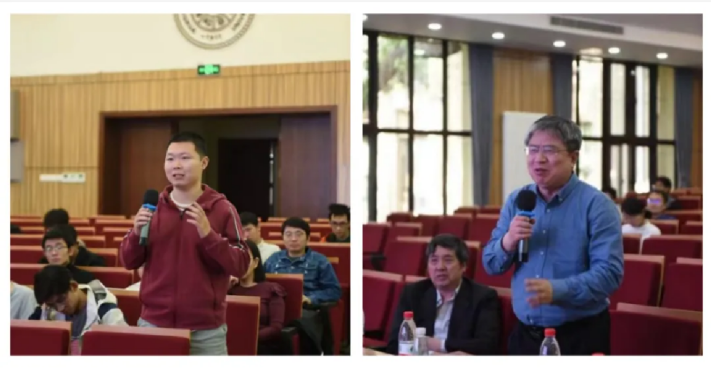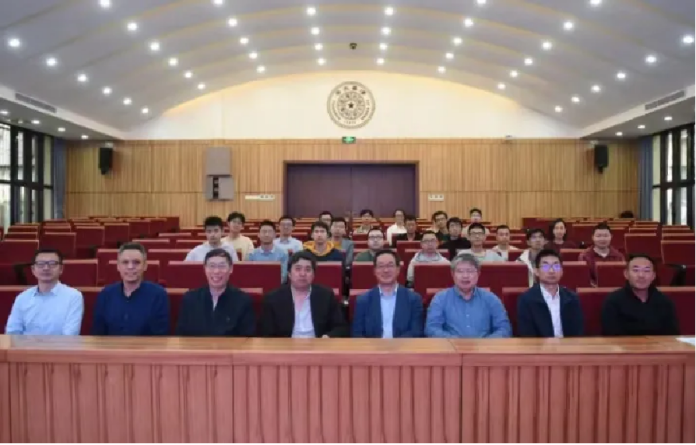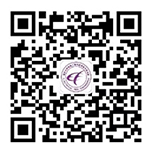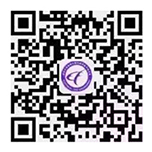on the afternoon of april 18, wang zhonglin, director of beijing institute of nanoenergy and nanosystems of the chinese academy of sciences (cas), cas foreign academician, fellow of the national academy of inventors (usa), fellow of the european academy of sciences, international fellow of the canadian academy of engineering, and foreign fellow of the korean academy of science and technology, was invited to deliver an academic lecture at department of electrical engineering and applied electronics. his lecture was titled “theory of dynamically generated maxwell’s equations for systems of non-uniform motion”. over 30 faculty members and students, including professors chai jianyun and li chunwen, attended the lecture. the event was hosted by dong xinzhou, director of the power system research institute of eea.
wang zhonglin’s academic lecture
before the lecture, wang zhonglin toured the department’s history museum and participated in a brief meeting, accompanied by dong xinzhou and chai jianyun. during his lecture, wang introduced the latest research theories on extending maxwell’s equations, explaining complex concepts in an accessible manner. following the presentation, dong xinzhou moderated a q&a session, during which wang engaged in lively discussions with the attendees. faculty members and students posed questions related to traditional electromagnetic field calculation methods, the issue of covariance at spatial boundaries, and applications of the extended maxwell’s equations, generating a dynamic and interactive environment.

q&a session with faculty and students
wang zhonglin is a pioneer in the field of nanoenergy research. he has advanced high-entropy energy and new-era energy systems based on nanoenergy. he initiated the grand field of self-powered systems and blue energy through nanogenerators, and established the novel domain of third-generation semiconductors based on piezotronics and piezo-phototronics. he founded the disciplines of piezotronics, piezo-phototronics, and tribotronics, and discovered six new physical effects: the piezotronic effect, piezo-phototronic effect, piezo-photonic effect, tribovoltaic effect, pyroelectric electron effect, and alternating current photovoltaic effect. he is ranked among the top two most influential scientists globally in terms of lifetime impact, holding the top spot in annual impact from 2019 to 2022, and is first in materials and engineering lifetime ranking. he has published 110 articles in nature, science, and their sub-journals, with over 430,000 citations and an h-index exceeding 310. he also holds more than 200 invention patents.

group photo with participants








